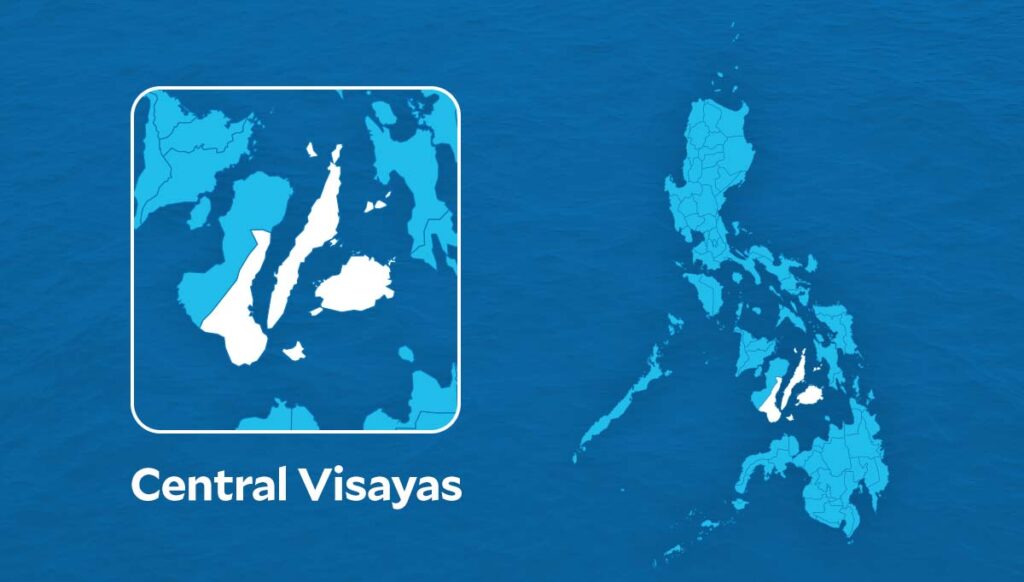CV records ‘fastest growing economy’ among all regions in PH

INQUIRER.NET FILE PHOTO
CEBU CITY, Philippines — Central Visayas has bested the 17 regions in the country after being named the “fastest-growing” economy based on the 2023 data of the Philippine Statistics Authority (PSA).
It also remained the fourth-largest contributor to the overall growth of the Philippine economy and the highest contributor outside Luzon, with a 6.6 percent share.
The largest contributor to the country’s economy remains the National Capital Region, with a 31.2 percent share, followed by CALABARZON with a 14.7 percent share, and Central Luzon with an 11.0 percent share.
On Thursday, April 25, the PSA Central Visayas hosted the simultaneous data dissemination of the 2023 Regional Accounts of the Philippines in Cebu City.
It was attended by representatives from key government agencies in the region and national officials, including the National Economic and Development Authority (NEDA), Department of Labor and Employment, Department of Agriculture, and Department of Tourism, among others.
According to the PSA, the economy of Central Visayas grew by 7.3 percent in 2023, with a Gross Domestic Product (GDP) growth to P1.381.2 trillion, higher than 2022’s GDP.
For the past years, the region’s GDP (GRDP) has continued to increase. In 2022, the GDP was P1.287.4 trillion, and in 2021 it was P1.196.0 trillion.
The PSA added that all regions in the Philippines posted positive economic growth. Western Visayas was the second-fastest-growing economy with a 7.2 percent growth, followed by the Ilocos Region with 7.1 percent, then the Cordillera Administrative Region with 6.9 percent, and finally the Davao Region with 6.7 percent.
Sectors, major contributors
The primary contributors to the region’s economic growth in 2023 were wholesale and retail trade; repair of motor vehicles and motorcycles, which had a 5.5 percent growth.
The second top contributor was transportation and storage, with a growth of 24.9 percent; and the third top contributor was food service activities, with a growth of 32.3 percent.
Moreover, the three major sectors that contributed to the region’s economy were Industry, Services, and Agriculture. Of these three sectors, Services had the largest share of Central Visayas’ GRDP in 2023, accounting for 70.0 percent.
Industry followed with a 23.4 percent share, and lastly, Agriculture, Forestry, and Fishing (AFF) with a 6.6 percent share.
Almost all the regions in the country are predominantly services-based, with CALABARZON being the only region that is industry-based.
READ: 3 cities in Cebu in top 10 provinces, HUCs list with high economic growth in 2022
2022 data comparison
Although Central Visayas achieved a positive result in 2023 GRDP, comparing the latest percentage to that of 2022, it was 7.6 percent.
However, according to Carlo Gabriel Simbajon, chief economic development specialist of NEDA-7, it still falls within the target range.
According to the Corporate Finance Institute (CFI), the annual GDP growth rate for a developed economy that is considered ‘normal’ is between two to three percent.
This meant that a GDP growth rate above this percentage indicates that the economy is “expanding and prospering” the CFI added.
National Statistician and PSA Head Claire Dennis Mapa, who was also present during the event on Thursday, noted that the year 2023 saw a decrease in GDP due to the impact of inflation.
What is GRDP?
“The GRDP presents the aggregate gross value added (GVA) of all resident producer units in the region. Moreover, GRDE presents the expenditure of residents of the region in the domestic territory plus their expenditures in other regions, ‘yung mga pumunta sa ibang regions, and the rest of the world, including ‘yung nagta-travel abroad,” said Claire Dennis Mapa, national statistician and head of PSA.
“Our goal for the GRDP and GRDE is really to provide our policymakers and stakeholders here in Region 7 with a comprehensive picture of the regional economies…Importante din na malaman ng ating mga stakeholders ano ba ‘yung mga drivers ng economic growth sa ating regions,” Mapa added.
Mapa said that PSA’s data dissemination serves as “an important tool” for planning and policy formulation for the subnational level that will have a great impact to the residents in the regions.
Rising from the typhoon, pandemic
Leopoldo Alfanta Jr., chief statistical specialist of PSA-7, recalled that three years ago, the country faced significant challenges to its economy, notably the COVID-19 pandemic.
Alfanta added that the reopening of borders has restored the movement of people and steered the economy back on track.
However, this progress was interrupted by the impact of Typhoon Odette, which struck Central Visayas and particularly affected the agriculture sector.
“Now, we have seen the rise of our economy back to where it should be. All industries showed positive growth and all the regions produced positive growth, and Central Visayas is on top at 7.3 percent (among the Visayas and Mindanao regions),” Alfanta said.
The statistician emphasized the importance of understanding the economic performance of the region.
“It provides the policymakers and the rest of the government with vital signs of our economy’s health,” said Alfanta.
Meanwhile, the economic performance of the provinces will be disseminated between November and December of this year.
ALSO READ
PH GDP growth in ʼ24 to accelerate to 6.2%
Disclaimer: The comments uploaded on this site do not necessarily represent or reflect the views of management and owner of Cebudailynews. We reserve the right to exclude comments that we deem to be inconsistent with our editorial standards.

